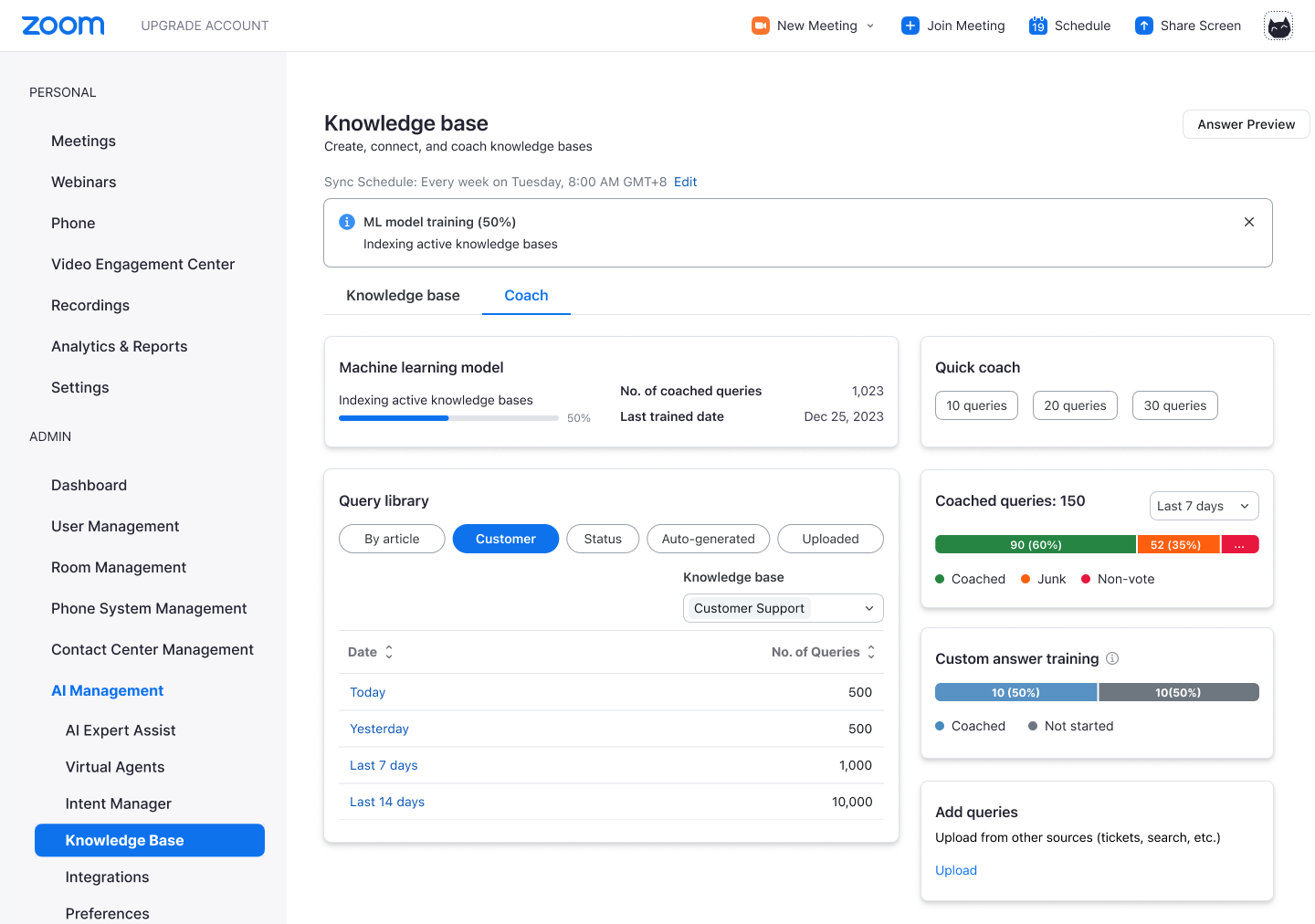Zoom Virtual Agent
Zero to One designer for Zoom's first AI chatbot
Zoom Virtual Agent is a new product, but one of our first clients saw an increase in self-service rate (60% to 70%) and sales leads ($0 to $250,000) in just six days. Zoom’s own customer support team calculated more than $13 million in cost savings each month.
After Zoom acquired Solvvy, I served as the lead designer for the knowledge base and intent manager features from September 2022 to March 2024. Until May 2023, I was also the lead designer for the bot flows team. In that time, I established myself as a strong researcher, team builder, and design AI/ML subject matter expert at Zoom.
I work closely with engineers and product managers to establish processes for both asynchronous and live work. I preach and practice the importance of design and engineering collaboration. As a result, I headed the most productive teams on the Zoom Customer Experience product that released a number of major features in 2023:
- The zero-to-one build of the knowledge base management system, the core of our AI chatbot
- The complete redesign of the ML intent management system
- One-click multi-language AI chatbots with independent versioning for each language
Knowledge base
The knowledge base is the source of training data and serves as the “source of truth” for all AI-powered products in the Zoom Customer Experience suite. It ingests data via web crawling, API, or self-creation and, along with customer and AI-generated queries, is the foundation for the training of a customer’s AI model.

Intent Manager
Intents are the foundation of highly customizable supervised AI models that allow businesses to create specific processes to solve more nuanced customer problems. However, intent models are usually made from scratch and can be notoriously difficult to build. Since the release of ChatGPT and the 'magic' of conversational AI, the work involved in creating intent models makes it seem like an inferior product. In fact, it is practically a required fine-tuning layer for any business that wants an AI model to train specifically to their brand, products, and terminology.
With this understanding, we use generative AI to give supervised models a ‘head start’ by suggesting intents and training phrases based on industry and purpose. By adding 'magic' into the supervised model creation process, we lower the cognitive burden of managing AI models for businesses.
Bot Flows
While AI models trained on knowledge bases can provide general answers, often customer resolutions require nuance or other conditionals before coming up with a resolution. Bot flows can be used by businesses to create simple and complex flows for their customers to self-service their issues. One of the main problems is creating and managing these flows in multiple languages.
I led the research, design, and build of our major differentiating feature: automatic machine translation and independent versioning for professional localization. It was one of the key asks from businesses and a major gap in the chatbot market. Most chatbot makers have automatic machine translation capabilities, but they cannot maintain a localized translation without creating a separate flow. The issue was that every time the flow changed, the machine translation would overwrite the localized translation.
After working with multiple customers and internal stakeholders, Zoom Virtual Agent can be automatically translated into 17 languages and, more importantly, each language can be managed independently in a single flow. Changes made to the primary language automatically translate new steps without overwriting independently translated flows. This greatly eases the burden of creating and managing chatbots in multiple markets.
